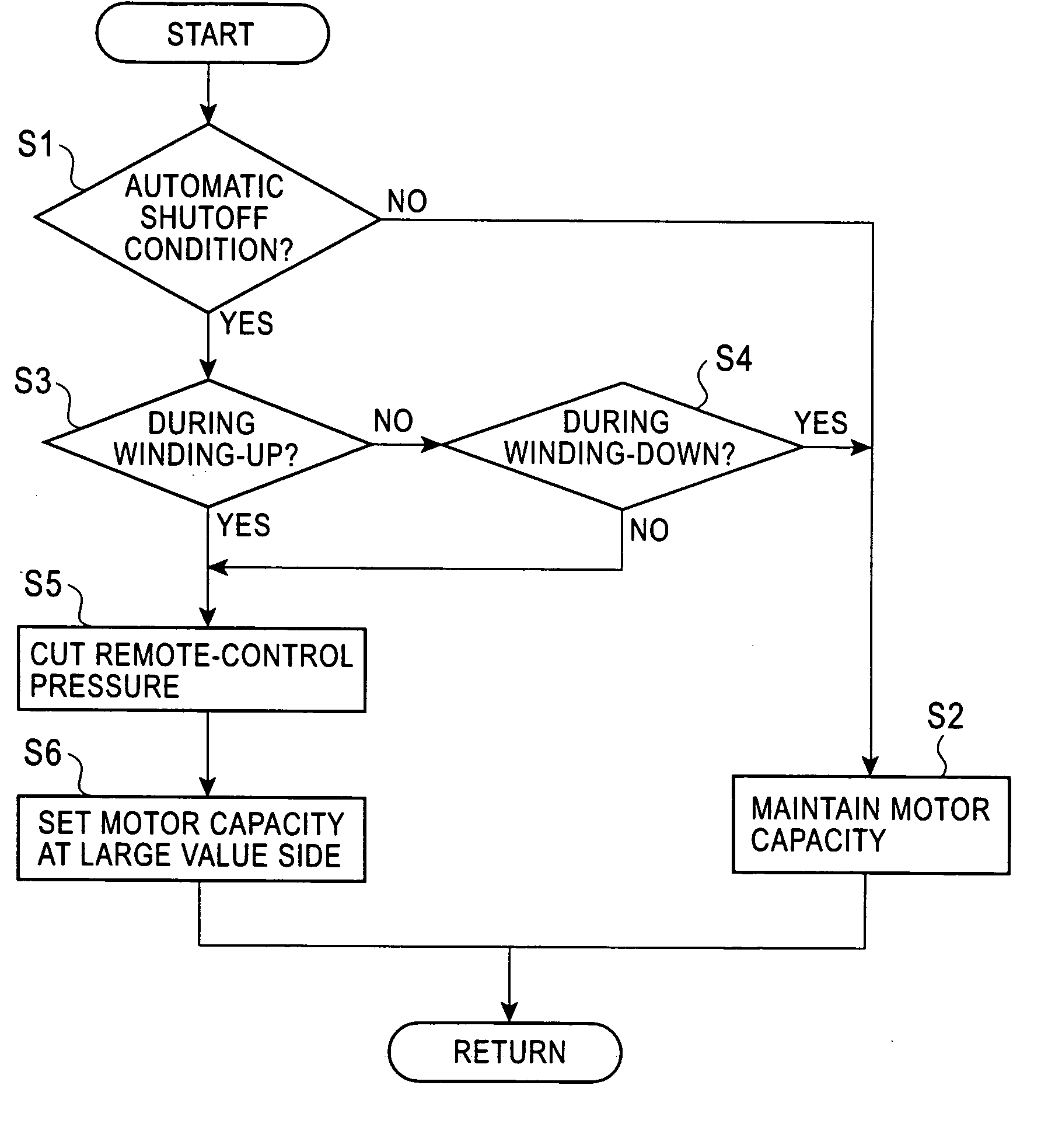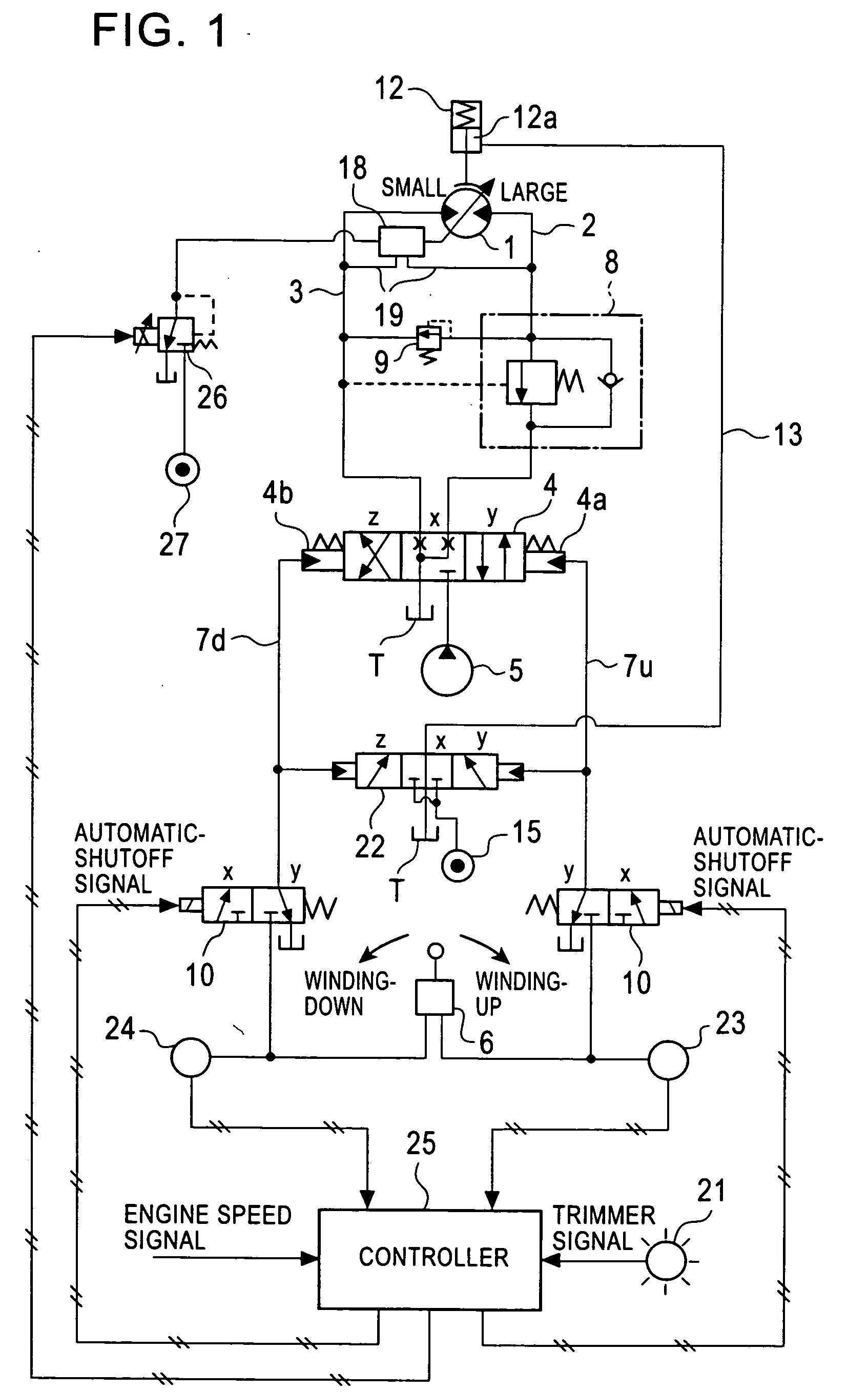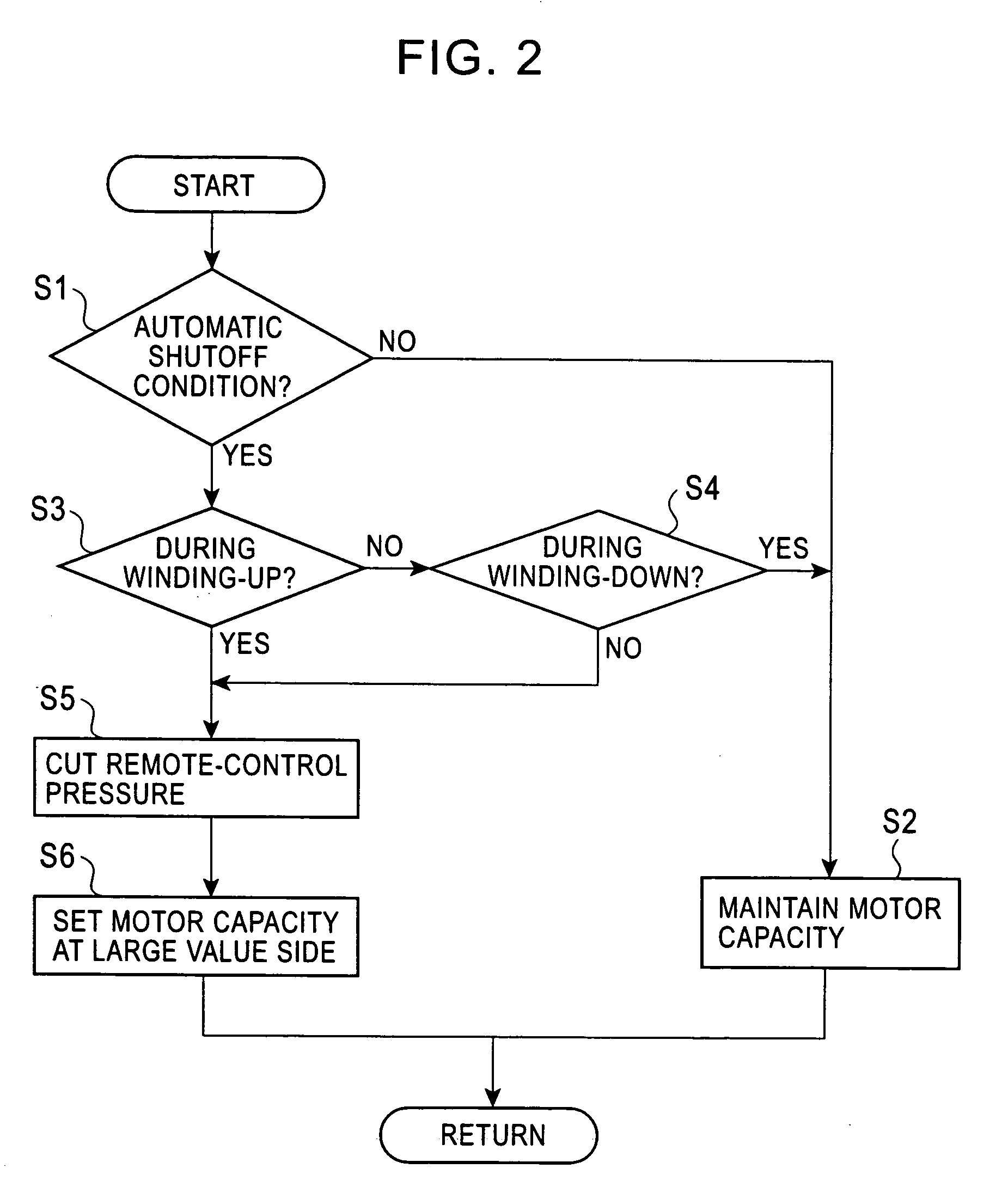Control device for hydraulic winch
a control device and hydraulic winch technology, applied in the direction of braking system, servomotor, hoisting equipment, etc., can solve the problems of slow control response, load to swing, and the speed control range at the same amount of supplied oil cannot be expanded
- Summary
- Abstract
- Description
- Claims
- Application Information
AI Technical Summary
Benefits of technology
Problems solved by technology
Method used
Image
Examples
first embodiment (see figs.1 to 3)
First Embodiment (See FIGS. 1 to 3)
[0043] In FIG. 1, a hydraulic motor 1 having variable capacity functions as a driving source of a winch. Both a winding-up side pipeline 2 and a winding-down side pipeline 3 of the hydraulic motor 1 are connected to a hydraulic pump 5 via a control valve 4 of a hydraulic pilot switching type having three switching positions x, y, and z for a neutral state, winding-up, and winding-down, respectively. This control valve 4 controls supply and discharge of pressurized oil to the hydraulic motor 1 (driving and halting of the hydraulic motor 1, and the rotating direction and speed at the time of driving).
[0044] A remote-control valve 6 functions as operating means for switching the position of the control valve 4 to the winding-up position or the winding-down position. A remote-control pressure generated by the operation of the remote-control valve 6 is transmitted to both a winding-up side pilot port 4a of the control valve 4 via a remote-control press...
second embodiment (see fig.4)
Second Embodiment (See FIG. 4)
[0074] Only differences from the first embodiment will be described.
[0075] According to the first embodiment, the hydraulic power source 27 supplies a hydraulic pressure to the regulator 18 via the regulator-controlling valve 26. Accordingly, if the regulator-controlling valve 26 fails when a small-capacity command is issued, as is often the case with electromagnetic valves, the regulator 18 cannot set a large capacity at the automatic shutoff.
[0076] Therefore, an inlet port 26a of the hydraulic power source of the regulator-controlling valve 26 is connected to the pressure chamber 12a of the negative brake 12 in a second embodiment.
[0077] With this arrangement, when the negative brake 12 is activated, the hydraulic pressure in the pressure chamber 12a and thus the hydraulic pressure in the regulator-controlling valve 26 are released. As a result, even if the regulator-controlling valve 26 fails at a small-capacity command, the regulator-controlling v...
third embodiment (see fig.5)
Third Embodiment (See FIG. 5)
[0078] According to the first and second embodiments, the controller 25 outputs a command signal to the regulator-controlling valve 26 to set the hydraulic motor 1 at a large capacity immediately after the activation of the negative brake 12 at the automatic shutoff. In contrast, according to a third embodiment, an operation signal of the remote-control valve 6, i.e. the remote-control pressure, is cut at the automatic shutoff to set the hydraulic motor 1 at a large capacity.
[0079] Specifically, the remote-control pressure lines 7u and 7d are connected to the regulator 18 via a shuttle valve 17, an electromagnetic switching valve 28 controlled by the controller 25, and a readout line 29 for reading out the remote-control pressure. With this arrangement, the motor capacity is decreased as the amount of the operation of the remote-control valve 6 is increased.
[0080] The switching valve 28 is normally connected to the shuttle valve 17 and the readout line...
PUM
 Login to View More
Login to View More Abstract
Description
Claims
Application Information
 Login to View More
Login to View More - R&D
- Intellectual Property
- Life Sciences
- Materials
- Tech Scout
- Unparalleled Data Quality
- Higher Quality Content
- 60% Fewer Hallucinations
Browse by: Latest US Patents, China's latest patents, Technical Efficacy Thesaurus, Application Domain, Technology Topic, Popular Technical Reports.
© 2025 PatSnap. All rights reserved.Legal|Privacy policy|Modern Slavery Act Transparency Statement|Sitemap|About US| Contact US: help@patsnap.com



